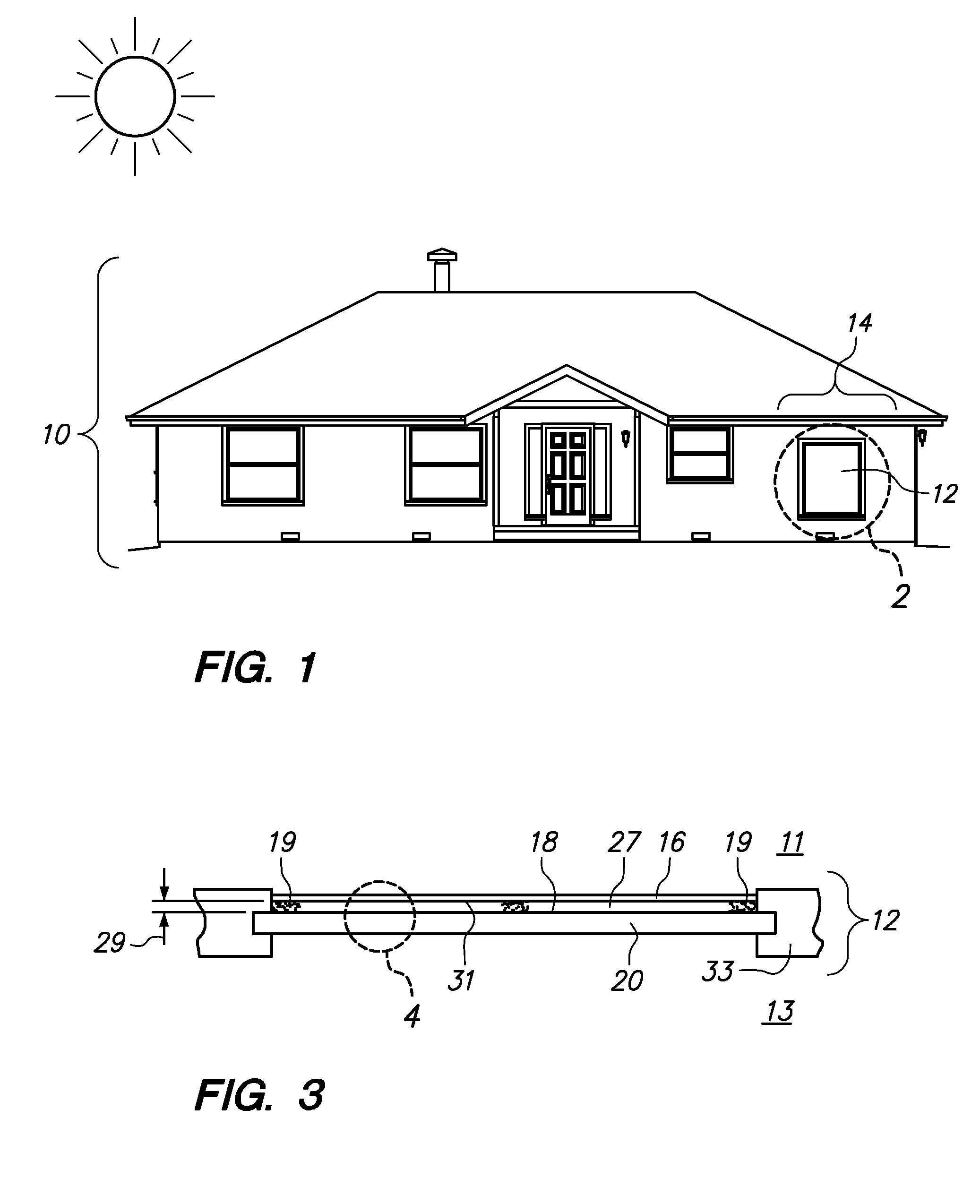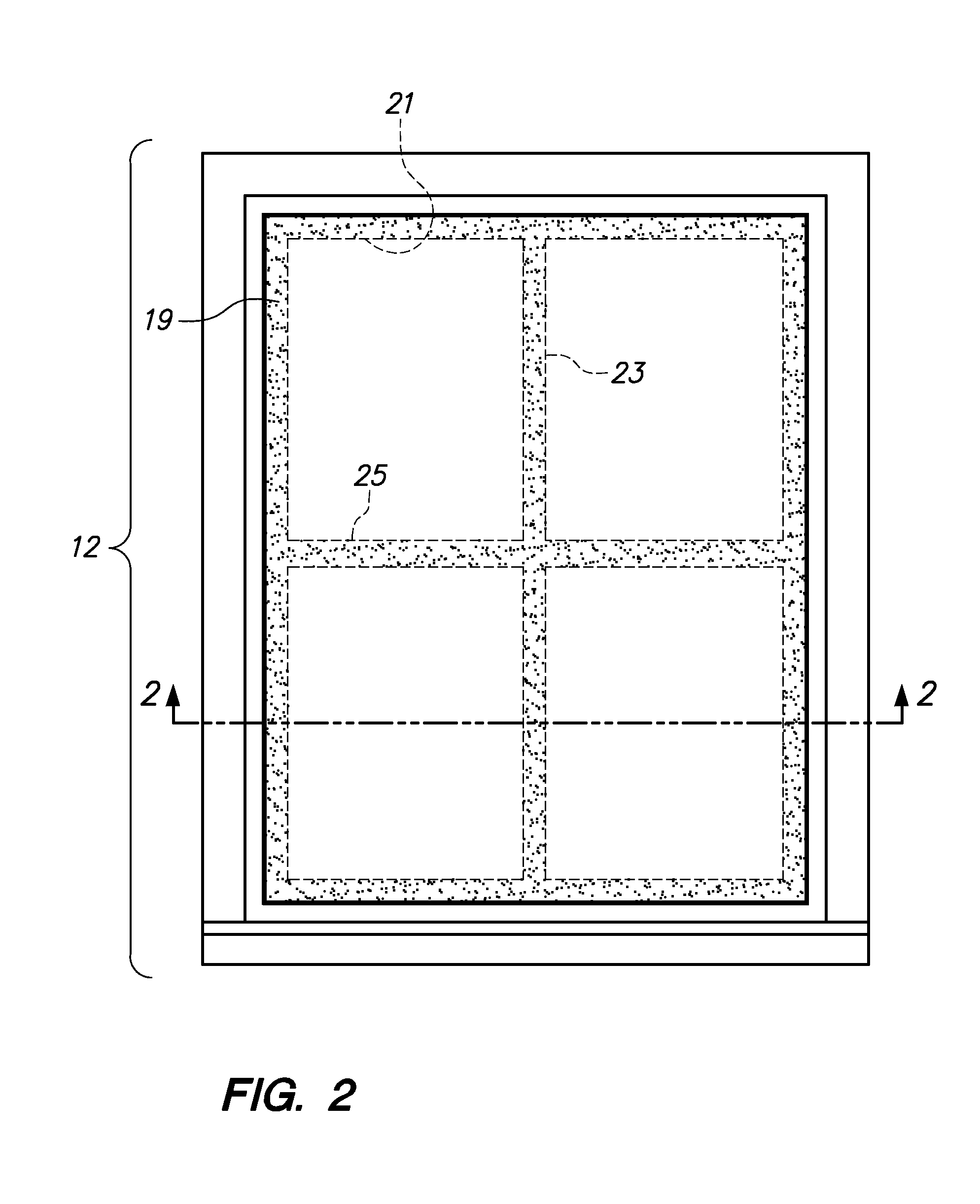Spectral Selective Solar Control Film Containing an Air Layer for Windows
a solar control film and air layer technology, applied in the field of building structures, can solve the problems of not receiving widespread adoption, reducing the application range of solar control films, and wasting energy in air conditioning systems, so as to reduce the coefficient of thermal conductivity through windows, and reduce the rate of oxidation of silver layers.
- Summary
- Abstract
- Description
- Claims
- Application Information
AI Technical Summary
Benefits of technology
Problems solved by technology
Method used
Image
Examples
Embodiment Construction
[0035]Referring now to FIG. 1, a building structure 10 having a window 12 is shown. The window 12 protects the occupants from environmental elements (e.g., wind, rain, etc.) yet allows the occupants to view the surroundings from within a room 14 of the building structure 10. FIG. 2 is an enlarged view of the window 12 shown in FIG. 1. As shown in FIGS. 2 and 3, the window 12 may have a film 16 attached to an exterior side 18 of a glass 20 of the window 12. For example, as shown in FIG. 3, the film 16 may be attached to the exterior side 18 of the glass 20 at its outer periphery 21 with adhesive 19. Adhesive 19 may also be disposed at selective areas within the outer periphery such as vertical area 23 and horizontal area 25 (see FIG. 2). Since the adhesive 19 is not continuously disposed on the film 16, a gap 27 (see FIG. 3) is formed between the film 16 and the glass 20 of the window 12. The film 16 and gap 27 provide a thermal insulation barrier to reduce thermal conductivity of he...
PUM
| Property | Measurement | Unit |
|---|---|---|
| thick | aaaaa | aaaaa |
| coefficient of thermal conductivity | aaaaa | aaaaa |
| transparent | aaaaa | aaaaa |
Abstract
Description
Claims
Application Information
 Login to View More
Login to View More - R&D
- Intellectual Property
- Life Sciences
- Materials
- Tech Scout
- Unparalleled Data Quality
- Higher Quality Content
- 60% Fewer Hallucinations
Browse by: Latest US Patents, China's latest patents, Technical Efficacy Thesaurus, Application Domain, Technology Topic, Popular Technical Reports.
© 2025 PatSnap. All rights reserved.Legal|Privacy policy|Modern Slavery Act Transparency Statement|Sitemap|About US| Contact US: help@patsnap.com



